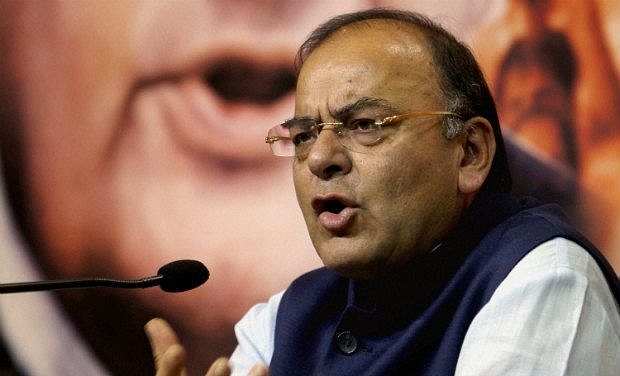
Directed Spending Within Social Sectors Will Get More Bang for the Buck
What is the role of the centre in nationally important functions like health and education? Why not let the states run the big programs?
Given the fiscal challenges facing the finance minister, what he does in terms of social sector spending in Budget 2016-17 will be closely watched. Following the recommendations of the Fourteenth Finance Commission, the quantum jump in tax devolution to the states to 42 per cent necessitated some restructuring of centrally sponsored schemes, resulting in a decline in allocation in some of these schemes. This attracted widespread criticism that the centre is cutting back on social sector spending.
But when it comes to social sector spending, we need clarity on two issues: what the role of the centre should be, and what the central government’s priorities in nationally important functions like health and education should be.
Considering states and local governments cannot be asked to take responsibility for defence and border management, would it be proper to expect the centre to be running village primary schools or health centres? This is not to be flippant or say that central spending in social sector is not important. However, such expenditure assignment has to be based on the principle of subsidiarity and on efficient delivery of services.
The central government is spending a large amount of resources on health and education through some large flagship schemes. However, under the division of functions in the Constitution, states have the primary responsibility of providing these services. More importantly, states have often questioned the merit of the one-size-fits-all template of centrally sponsored schemes run from Delhi.
All states, taken together, account for more than 80 per cent of social sector spending, although there are individual variations. Indian Public Finance Statistics, published by the Ministry of Finance, shows that in 2013-14, out of total spending of Rs. 7,99,352 crore, state spending was Rs. 6,53,546 crore. This fundamental structure has not changed in the last 25 years despite the proliferation of centrally sponsored schemes in the social sector. Given this, can central expenditure alone influence outcomes? Certainly not.
The first principle of spending should be complementarity. Central spending should complement state expenditure. If not, this can result in substitution of state spending by central expenditure. The second principle should be provisioning of uniform quality and access to services across the country. If these have to be ensured, we cannot look at central spending in health and education through the existing prism of centrally sponsored schemes. There is an urgent need to recast central intervention on subjects of national importance at the state level.
There were close to 300 centrally sponsored schemes in the late 1990s; these have been rationalised and brought down to 66 in recent times. Does this imply that the central government has 66 national priorities where it requires state governments to provide these services? Budget 2016-17 must take a fresh look at these 66 schemes, list out a few national priorities and evolve a design for implementation in consultation with the states.
The Niti Aayog set up a sub-group of chief ministers on the rationalisation of centrally sponsored schemes. Unfortunately, nothing much can be derived from the report of this committee. Dividing existing schemes in order of some priority, as the committee did, is certainly not restructuring of social sector intervention by the centre.
Within social sector, health is one area where recasting central intervention is possible. India spends only 1.3 per cent of GDP on health. This compares unfavourably with countries such as China (3.1 per cent), Brazil (4.7 per cent), and South Africa (4.3 per cent). The National Health Policy 2015 proposes increasing health expenditures by increasing public health allocations to 2.5 per cent of GDP. While there is a need to step up health expenditure, it is also important to keep in mind India’s complex federal system. This requires reprioritization of health expenditure within the sector and directed health spending, keeping state-specific needs in mind. But that is a medium term objective. Budget 2016-17, however, can certainly introduce the following policy measure.
In 2014, it was announced that four new vaccines will be introduced which could prevent an additional 100,000 infant deaths each year. According to the announcement, vaccines protecting against rotavirus, rubella and inactivated poliovirus vaccine (IPV) would be made available to all children through the Universal Immunization Programme (UIP), while Japanese encephalitis vaccines would be introduced in 179 endemic districts across nine states. Budget 2016-17 should prioritize this even though the introduction and scale-up of these new vaccines will require additional resources.
Given low allocations towards health, the need to prioritize health interventions that have high impact and large scale positive externalities such as immunization, maternal, child and adolescent health is critical. These are the services which have nation-wide externalities and should be undertaken by the central government in a mission mode rather than competing with the states in a functional space of service delivery.
In this context, we should learn from our own positive experience of polio immunization. The polio immunization programme is a classic example of uniform provisioning of services across the country done in a mission mode through central government support and intervention This particular intervention by the centre reduced the incidence of polio over time and India was declared polio free nation in 2014.
This is just one suggestion relating to the health sector. The government can put its mind and work out similar reprioritization for other social sectors as well.
Pinaki Chakraborty is a professor at the National Institute of Public Finance and Policy and was economic adviser to the Fourteenth Finance Commission